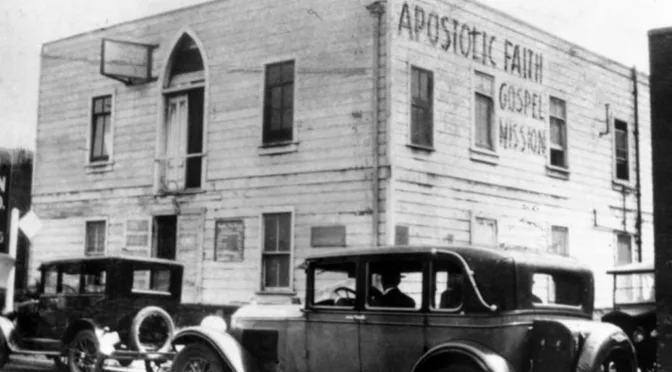The Hebrides Revival of 1949–1952 stands as a powerful testament to God’s ability to transform lives and entire communities through the prayers of a faithful few. This revival took place in the remote Scottish islands of the Hebrides, particularly on the Isle of Lewis. Sparked by the unrelenting prayers of two elderly sisters and the Spirit-filled preaching of Duncan Campbell, this revival left an indelible mark on the region and serves as an enduring example of God’s sovereignty in revival.
At its heart, the Hebrides Revival was marked by deep conviction of sin, a hunger for holiness, and an overwhelming sense of God’s presence. The extraordinary events that unfolded remind us that revival cannot be manufactured—it is the work of the Holy Spirit, born out of prayer and repentance.
The Prayer of Two Sisters
The revival began in an unlikely place—a small cottage in the village of Barvas, where two elderly sisters, Peggy and Christine Smith, faithfully interceded for their community. Peggy was blind, and Christine was crippled with arthritis, yet their physical limitations did not hinder their spiritual fervor. The sisters were burdened by the spiritual apathy in their village and felt led to pray for God to send revival.
Inspired by Isaiah 44:3: “For I will pour out water on the thirsty land, and streams on the dry ground; I will pour out My Spirit on your offspring, and My blessing on your descendants”(AMP), they prayed night and day for God to fulfill His promise. Their intercession soon involved others, and a small group of believers began meeting in a barn to pray fervently for revival.
One night, a young man in the prayer group read Psalm 24:3–4: “Who may ascend onto the mountain of the Lord? And who may stand in His holy place? He who has clean hands and a pure heart” (AMP). The group was deeply convicted of their need for personal holiness, leading to heartfelt repentance. It was then that the Spirit began to move.
The Arrival of Duncan Campbell
The sisters felt prompted to invite Duncan Campbell, a traveling evangelist, to come to Lewis. Campbell initially declined, but after sensing God’s call, he changed his plans and arrived at Barvas in December 1949. Upon his arrival, he was met with an unusual spiritual intensity.
Campbell’s first meeting at the local church was packed, with people crying out to God even before the service began. The meeting lasted late into the night, and as Campbell prepared to leave, a young man prayed aloud: “Oh God, You made a promise to pour water on the thirsty and floods on the dry ground, and You are not doing it!” The Spirit fell mightily, and the church service continued until the early hours of the morning.
A Sovereign Move of the Spirit
The Hebrides Revival was not marked by emotionalism or planned strategies but by a profound sense of God’s holiness and presence. People were deeply convicted of their sin, often spontaneously and without any human prompting.
In one account, as Campbell traveled to a nearby village, he found men and women weeping in the fields, crying out to God for mercy. Entire communities were gripped by the reality of God’s presence, with many coming to faith without ever attending a church service.
Key features of the revival included:
1. Deep Conviction of Sin
People were overwhelmed by their need for repentance and a right relationship with God. This mirrored the conviction described in John 16:8: “And He, when He comes, will convict the world about sin, and God’s righteousness, and about judgment” (AMP).
2. Persistent Prayer
Prayer was the foundation of the revival. Prayer meetings often lasted through the night, with believers seeking God’s face with urgency and humility.
3. God’s Sovereign Timing
The revival spread without human orchestration. People felt compelled to seek God, even in their homes or workplaces, as the Spirit moved across the island.
4. Unity and Holiness
The revival brought a renewed sense of unity among believers and a hunger for holiness. Churches were filled, and relationships were restored.
Transforming Communities
The Hebrides Revival didn’t just affect individuals; it transformed entire communities. Taverns emptied, crime rates dropped, and long-standing feuds were reconciled. Even those who initially mocked the revival were brought to their knees in repentance.
Campbell later described the revival as a moment when “God came down.” The extraordinary sense of His presence was so tangible that people were often drawn to churches without invitation, feeling an irresistible pull to meet with God.
The Legacy of the Hebrides Revival
Although the Hebrides Revival began in a small, remote island community, its impact extended far beyond the shores of Scotland. It inspired believers around the world to seek God in prayer and to trust in His power to bring renewal.
One story often shared about the revival is its connection to the global church. Some believe that the revival indirectly influenced other movements of God, as those touched by the Hebrides went on to pray and minister in other nations. While the revival gradually subsided in the early 1950s, the lessons it offers remain relevant today.
Lessons from the Hebrides Revival
The Hebrides Revival provides vital insights for those longing to see God move in their generation:
1. Revival Begins with Prayer
The prayers of Peggy and Christine Smith remind us that revival often begins with a few faithful believers who intercede with persistence and faith.
2. Holiness Prepares the Way
The conviction of sin and the call to live with clean hands and pure hearts demonstrate that personal holiness is essential for revival.
3. God’s Sovereignty in Revival
The revival in the Hebrides was not orchestrated by human plans but was a sovereign work of God. It reminds us to rely on Him fully.
4. Revival Transforms Communities
True revival impacts not only individuals but entire communities, bringing societal change that reflects God’s kingdom.
A Call for Revival Today
The Hebrides Revival is a stirring reminder that God is willing to move powerfully among His people when they humble themselves, seek Him in prayer, and commit to holiness. No place is too remote, no situation too desperate for God to pour out His Spirit.
Prayer for Revival
Lord, we thank You for the testimony of the Hebrides Revival and the lives transformed by Your Spirit. Teach us to pray with persistence and faith, to seek holiness, and to trust in Your sovereignty. May Your presence come upon us as it did in the Hebrides, bringing conviction, renewal, and transformation. In Jesus’ name, Amen.


